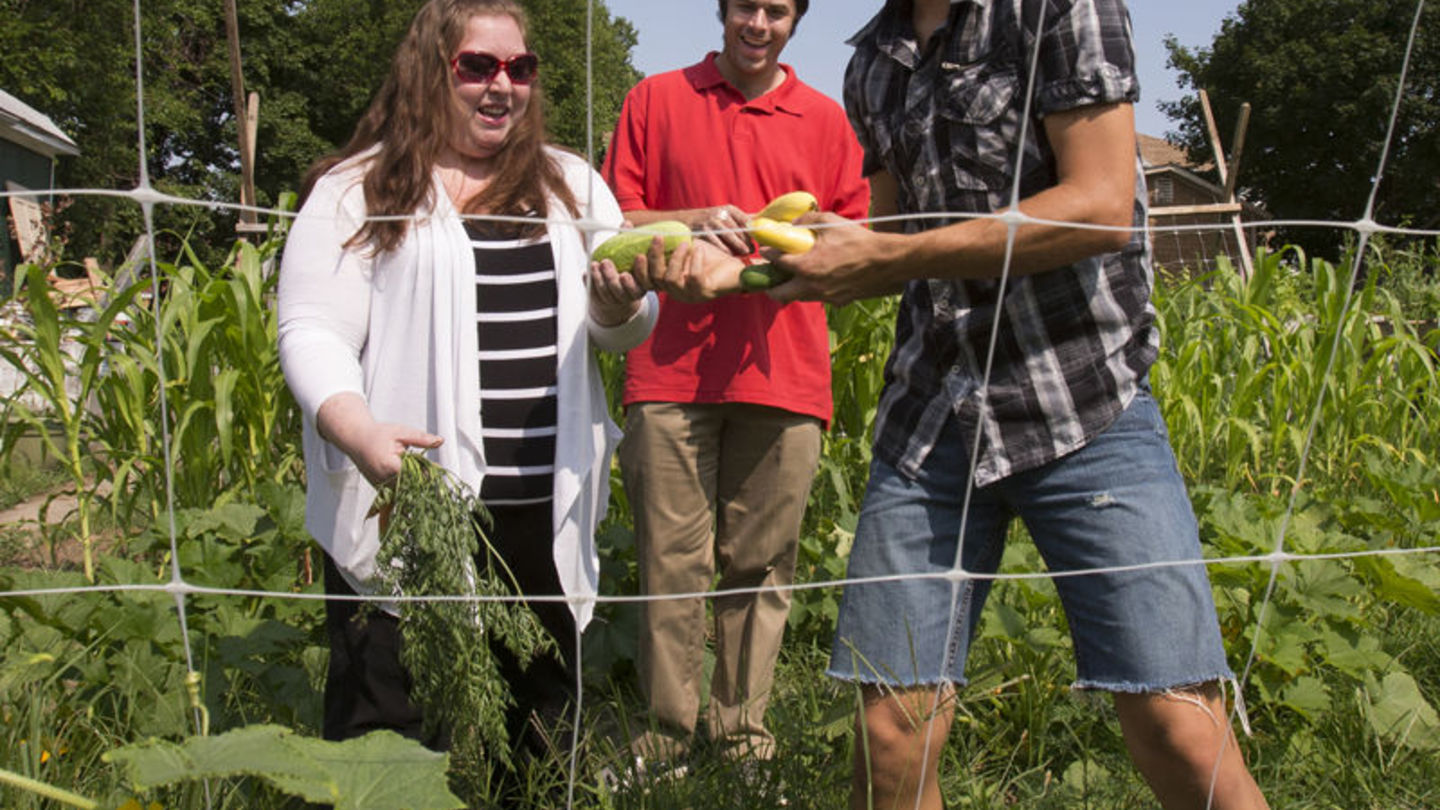
For some, their food concerns might not go any further than stopping at the local supermarket to determine what's for dinner that night.
For officials and community activists in Norristown, their concerns center on the food security of a population of nearly 35,000, working to ensure that all residents have ready, affordable access to healthy food choices.
"Quality, affordable food is essential to the well being of any community," said Dr. Deborah Howe, Chair of the Department of Community and Regional Planning, whose undergraduate senior Community and Regional Planning Studio recently presented the findings of a comprehensive "food system assessment" to the Norristown Municipal Council. "As an area of focus, there are so many dimensions — health, economic development, community development."
Earlier this year, a diversity of organization members, civic leaders and community activists "expressed interest in our students working with them to conduct an assessment of Norristown's food system," said Dr. Howe. Working with Temple, they formed the Norristown Food System Taskforce.
"The students met with this group early in the spring semester to glean information from their diverse perspectives on food in Norristown to develop the areas of focus for the study," she said. "Once the dimensions of the study were determined, the students documented existing conditions and provided recommendations relative to several overarching areas. They also conducted a community workshop to solicit further input."
According to Jennifer Krouchick, who recently graduated from the Community and Regional Planning undergraduate program, about 14 students worked in four subcommittees focused on transportation infrastructure and food accessibility, food programs sponsored by the Norristown School District, urban agriculture and emergency food services such as food pantries and shelters.
"Over the course of the study, we worked with dozens of community groups and municipal agencies — Advocates Against Hunger and CADCOM (Community Action Development Commissions), for example — examining emergency food options, demographics and transportation," she said. "We looked at urban agriculture initiatives such as the Norristown Farm Park. We also examined community walkability — Norristown has a walkability score of 74 percent, which is very beneficial for healthy food access."
Students conducted an independent survey of local food markets and spent time working in local food pantries "to get a better understanding of the needs of the community at the ground level," Krouchick said.
"Our goal was to examine essentially every aspect that comprises a sustainable food system," she said. "We knew that this study would be just a starting point for the community. They have the opportunity to take it further."
One of the most helpful aspects of the study, "is that it got everyone together in the same room talking about food security," said Tom McGlynn, one of the founders of Feed the Burbs, a network of sustainability experts specializing in edible landscapes within suburban communities.
"The way we tend to produce food and get it to our plates causes incredible degradation to our communities, the environment and the planet. If you look at Philadelphia, Norristown, really any residential community, the majority of their residents are reliant on having to drive to supermarkets — that's a flawed system," he said. "Efforts to support food sustainability are often fragmented. This study provides the groundwork to concurrently work together and develop even broader, multi-municipal initiatives."
Part of the students' assessment provided Council and local emergency food service providers with a weekly calendar of what was covered by emergency food services and where there might be gaps, said David Swedkowski, a Community and Regional Planning graduate student and teaching assistant for the undergraduate planning studio.
"Some of our suggestions included exploring 'backpack' programs for school children — more than 75 percent of children in the borough are eligible for free lunch programs, but what happens when they go home for dinner or on weekends or during the summer?" said Swedkowski, a Norristown activist. "There are a number of vacant lots that could be used to develop community gardens; even the street trees provide an opportunity for urban gardening. We also suggested that the borough develop a food policy council to support and build upon the initiatives that are taking place in Norristown. There are a lot of good things happening in the borough — we need to publicize what we're doing well and celebrate every success along the way."
One of the contributions that planners can make to a community is to "hold the mirror up — to let a community look at itself and see what is working and what can be built upon," said Dr. Howe.
"One of the striking things about Norristown is that there is already a lot going on when it comes to food availability, more than, I think, many of the borough leaders and activists realized. With a little bit of focused attention, Norristown will have a true food systems initiative in place," she said. "From farmers markets to a very comprehensive network of emergency food providers, the borough is doing exciting things in this arena. This type of study helps create synergies to get people and organizations working together."
